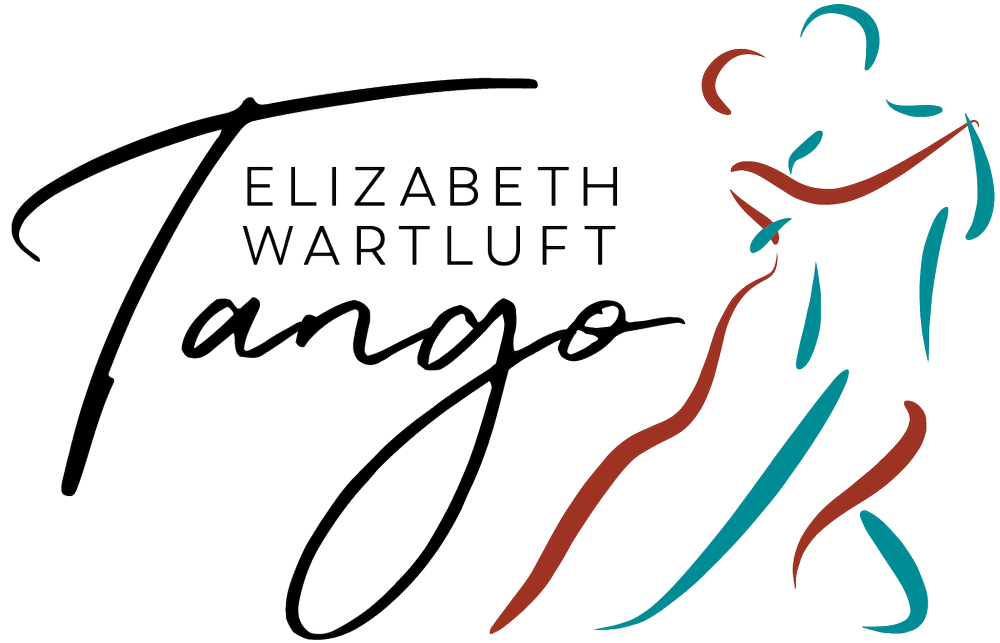I’ve been thinking about optimal tango (not ideal tango) and how each person’s body structure impacts their tango. I think that all people can become good tango dancers if they understand their own body and technique on a deep level, and adjust their dance to their bodies, not to what it “should look like” on the dance floor.
Last week in class, we spent a lot of time with our eyes closed. I wanted people to FEEL what they were doing, rather than evaluate it visually. The most interesting observations so far:
Ochos are straight lines!
As we worked on ochos, many dancers found that they had an idea of an ocho crossing across their midline, rather than a straight step followed by a pivot. I have to say that I had never tried to dissuade people from doing zigzags across the floor because it fits into a room well for a group class. However, when I asked people to go “straight forward” in their space and then pivot—a third of the class improved their ochos immediately! Our visual map of ochos can get in the way of what the body is actually doing.
Becoming aware feels uncomfortable
We hold memories, traumatic and positive, in our muscles and tissues; there’s a whole school of therapy designed to release trauma through movement. What does that mean for finding spots in your body that aren’t helping you dance well? Some of them unlock uncomfortable memories, or our body simply tries to avoid that spot.
Being open to feeling vulnerable means you are open to change, healing, growth—all positive, but scary. When you can look at that in your movement, you can discard what is holding you back and find your new, better-functioning body and technique. I didn’t say it was easy.
You feel the problems before you can fix them
Most dancers need to be able to FEEL what’s not working before it can be fixed. It helps if the teacher points out issues, but you won’t be able to fix them until YOU can feel what’s going wrong. At that point, most people confide, “I think I’m getting worse at this dance!!!!!” to me. From my own experience, I can tell you that I have felt this way each time before a major breakthrough in my dance, and I still go through this process. You will have an understanding of the issue before fixing it: you don’t suck at tango! You are GOOD at tango! Don’t quit now when you are about to go up a level!
Class themes for the week
So, classes this week will focus on YOU finding how your body structure actually functions in key tango fundamentals:
Tuesday (January 12): Balance challenges and adding adornos to walking, pausing and ochos
Friday (January 15): Balance on your feet and ankles, and balance in turns
